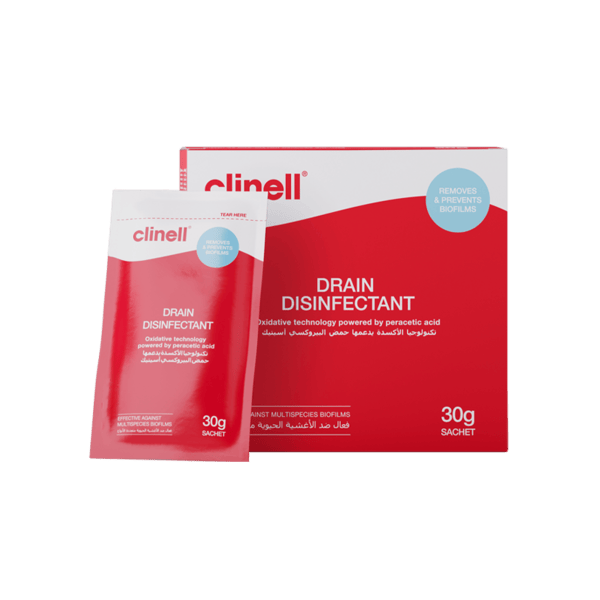
Drain Disinfectant
More effective, and gentler on drains, than chlorine. Destroy protective bacterial biofilms lurking in hospital sinks and showers. Prevent regrowth for at least 4 days.
Some of the most persistent outbreaks come from drains. In these ideal conditions, bacteria form biofilms – protective structures rendering traditional disinfectants ineffective. Clinell Drain Disinfectant uses PAA technology from our patented Peracetic Acid Wipes to break down the protective layer and eradicate the source of infection for a >99.9999% reduction.
Product code: CSDD24
Placing Clinell Drain Disinfectant Indicator Tape over the treated sink/shower indicates to others that the facility should not be used for 15 minutes while the product is working. Product code: CSDDT90.
Does Drain Disinfectant require activation?
In the sachet, Clinell Drain Disinfectant contains stable, precursor molecules. When the sachet it poured into the drain, these molecules activate automatically and produce a unique blend of disinfectants to eradicate wet biofilms.
What temperature water should be used?
Turn on the hot tap and allow to run for 30 seconds or until the water is hot. The average temperature of hot tap water is sufficient for use with Drain Disinfectant, which is effective at temperatures above 20°C. Do not mix with cold water.
What concentration of Peracetic Acid is generated?
After activation with water, Drain Disinfectant generates a concentration of PAA equal to 4000ppm within the 15-minute treatment. This concentration is sufficient to eradicate biofilms within the drainage trap and prevent regrowth.
Is Drain Disinfectant safe for use in drains?
When activated with water, Drain Disinfectant has a near-neutral pH and has been tested for compatibility with the most common materials used in hospital drains. In time, Drain Disinfectant’s active ingredients break down to non-toxic end products including water, vinegar, and oxygen.
How many sachets are in a box?
Each box of Clinell Drain Disinfectant contains 24 individual sachets. Each sachet provides a measured dose for one drain.